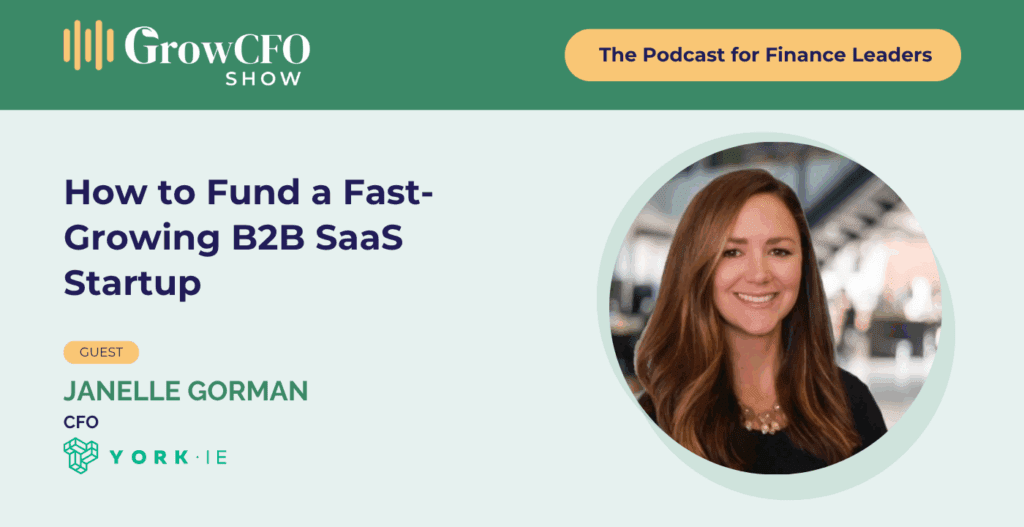#30 CFO Competency Framework with Dan Wells

GrowCFO has created a CFO Competency Framework that covers the key skills required to become an effective finance leader. This is rapidly becoming the global toolkit to help finance leaders benchmark their skills and competencies against their peer group. It also acts as a CFO Readiness Toolkit to help the next generation of aspiring CFOs.
During this podcast episode, Dan Wells and Kevin Appleby discuss the purpose of the CFO Competency Framework. In addition, we discuss how it is helping so many finance leaders to accelerate their learning and development.
CFO Competency Framework’s purpose
GrowCFO noticed that there was a huge gap in the finance leader ecosystem. Nobody had previously produced a global competency framework to help finance leaders benchmark their existing skills against those required to become a CFO.
Senior finance professionals were struggling to identify their skills gaps and to prioritise their most important learning and development objectives. As many people say, “You don’t know what you don’t know!”
Our CFO Competency Framework is designed to deliver many important purposes.
- Identify the skills gaps to be addressed by the next generation of finance leaders.
- Assist CFO job applicants to become self-aware candidates with a proper development plan.
- Help first-time CFOs to become more impactful within your role.
- Highlight opportunities for the CFO to create value and achieve your company’s vision.
- Determine the difference between the CFO role and versus Finance Director or Head of Finance.
- Filter GrowCFO’s activities to help experienced CFOs to fulfil your annual CPD requirements.
- Map your competency assessment ratings into online courses, lessons and workshops.
- Benchmark your competency levels against your most relevant finance leader peer group.
It is no surprise that many finance leaders are already using the GrowCFO Competency Framework to accelerate your career progression.
How did we build the CFO Competency Framework?
GrowCFO has a huge network of aspiring finance leaders, first-time CFOs, experienced CFOs, CEOs, Chairs, NEDs, other C-Suite members, advisors, investors and recruiters. We held focus groups with representatives from these communities to determine the required competencies for the modern-day CFO.
GrowCFO also consulted with a huge number of GrowCFO members to obtain people’s views and feedback. We worked with technology experts, graphic designers and programme developers to build a market-leading digital CFO Competency Framework that operates on a self-serve basis.
Following this, we engaged inspirational CFOs to create a huge number of competency lessons that are located within our world-class learning management system. We have mapped each of our CFO competencies into online training courses and regular workshops. This allows finance leaders to efficiently generate your tailored learning and development plan to further develop their skills and address their biggest challenges.
How is the CFO Competency Framework structured?
Our CFO Competency Framework contains three categories: Foundation, Implementation and Impact. These help you to preserve value, create value and maximise value throughout your role.
Each category comprises three competencies, giving a total of nine competencies across the framework. These competencies are inter-connected and you will often be using many of these concurrently.
Each competency contains five different skills. Therefore, the GrowCFO Competency Framework contains a total of 45 skills that are relevant to a typical modern-day CFO.
There is a lot for finance leaders to master and our framework will constantly evolve over time, in line with the ongoing evolution of the CFO role.
Foundation category
The Foundation category contains three competencies: Governance and Control, Operational driver and Financial Planning & Analysis.
These three competencies form the foundation for your future success within the role and are critical towards preserving value within your business.
Implementation category
The Implementation category contains three competencies being: Strategic Business Partner, Catalyst for Change, and Fundraising and M&A.
These competencies represent your ability to deliver the company’s business plan and to create value in your role. You are likely to be combining your hard and soft skills with a powerful effect.
Impact category
The Impact category contains the following three competencies: Leadership, Commercial mindset and Soft skills.
These contain many of the advanced competencies that really make you stand out as a top-quality finance leader. These are harder to learn but allow you to maximise the value that you create across your firm.
The nine competencies
The following section provides more insights regarding each competency:
Governance and Control
- Governance: Deliver your Board responsibilities and produce Board pack reports. Ensure director compliance and conduct.
- Risk management: Implement policies and procedures. Monitor control frameworks and oversee committees;
- Compliance: Perform financial and non-financial reporting. Comply with regulatory requirements such as legal, tax, statutory audit and internal audit/reviews;
- Closing the books: Optimise your period-end close procedures. For example: process journals, form valuations and make judgements; and
- Treasury: Oversee cash management and treasury policies. Manage foreign exchange and implement hedging arrangements.
Operational driver
- Lead operations: Oversee specific operational activities. For example, Finance, HR, Legal, IT and Facilities;
- Implement and integrate systems: Identify systems, implement new technology solutions and integrate applications;
- Optimise processes: Review business processes to determine how best to simplify, automate and streamline their associated activities;
- Embed finance across the business: Develop relationships across each department and put finance at the heart of the business; and
- Capture data and create dashboards: Understand what your audience wants. Extract data and report it in the most user-friendly manner.
Financial Planning and Analysis
- Allocate capital: Divide up your company’s financial resources and other sources of capital in a manner that generates the maximum return for your shareholders;
- Build financial models: Create a short-to-medium term model to forecast your financial performance and KPIs based upon your strategic plan;
- Create investment cases: Challenge and support investment cases to determine which initiatives to support;
- Analyse data: Apply your financial perspective and commercial awareness to scrutinise both financial and non-financial data;
- Manage outcomes: Manage outcomes of budgetary performance during each financial period. Take mitigating action where required.
Strategic Business Partner
- Influence strategies: Deliver data-driven insights, generate new ideas and influence the business plan;
- Support decision-making: Support your teams and facilitate problem-solving. Provide a financial perspective, create collaboration and drive decision-making;
- Become a critical voice: Challenge the management team and Board. Also, become an influential voice across the wider firm;
- Manage stakeholders: Be the main point of contact to internal and external stakeholders. Provide regular updates and generate confidence in your business; and
- Be the co-pilot to your CEO: Work closely with your CEO to communicate and deliver the business plan across your organisation.
Catalyst for Change
- Identify profit and cash initiatives: Combine your financial knowledge, commercial awareness and business relationships to identify opportunities that improve financial performance;
- Oversee and drive business change: Lead and oversee change initiatives that deliver the key objectives within your business plan;
- Finance transformation: Design and implement a medium-term collection of finance projects that deliver a pillar of your company’s key strategic objectives;
- Restructure business operations: Deliver significant business change such as merging operations and carving out business units. In addition, consider restructuring teams, integrating new businesses and outsourcing processes; and
- Monitor effectiveness of change: Regularly monitor the impact of change initiatives against your intended targets and implement any mitigating action to deliver the planned outcomes.
Fundraising and M&A
- Identify and evaluate opportunities: Work with your management team to develop your fundraising and M&A strategy. Also, understand the components of value creation, identify opportunities and create investment cases. Accordingly, determine returns on investment and de-risk your activities;
- Perform valuations: Build valuation models using a range of approaches. Determine valuation ranges and returns on investments. Assess the transaction’s impact on your financial model and its value for money;
- Fundraising: Lead fundraising rounds and negotiate terms. Co-ordinate advisors, manage stakeholders and complete deals;
- Making acquisitions: Perform a key role in acquiring companies and assets. Lead the deal process, work with advisors and integrate acquisitions; and
- Exit readiness: Implement the necessary actions to prepare your business for an exit and play a key role in the sales process.
Leadership
- Lead your finance function: Determine your purpose, structure your finance activities, shape the team and deliver your responsibilities;
- Become a C-Suite business leader: Enable the vision and set the right pace. Share the bigger picture, monitor activities, collaborate, keep people informed and help people to succeed;
- Manage people: Determine your people plan throughout the business life cycle. Accordingly, recruit, manage and motivate your workforce. Align your teams and create self-leaders;
- Drive the culture: Promote your desired business culture, act as a role model and exhibit the right values. Champion diversity and inclusion throughout your business; and
- Represent your business externally: Build trusted relationships and generate confidence with external stakeholders. For example, shareholders, investors, customers, suppliers, regulators and market analysts. In addition, get involved in public relations activities and support third party negotiations.
Commercial mindset
- Understand your business: Learn all about how the business works and its previous journey. Understand why things are done in a certain way. Determine how decisions are made and identify any internal politics. Be aware of your customer offerings and what is currently happening;
- Develop market knowledge: Build up your knowledge of rival products, your competitors’ activities and market trends. Understand the impact of emerging business models, new entrants and market disruptors;
- Tell the financial story: Utilise your commercial awareness to tell the financial story. For instance, link data trends to commercial activities and demonstrate what is driving the financials;
- Drive growth: Help to identify new sources of growth such as new products, expansion into other markets and M&A; and
- Maximise shareholder value: Think like an investor to balance short-term earnings versus long-term growth. Identify profit and cost drivers and review the customer value proposition. Manage the profit and loss account and perform value chain analysis. Respond to market threats, terminate non-profitable activities and dispose of non-core assets.
Soft skills
- Communication: Communicate effectively in a calm and controlled manner that spreads confidence amongst your audience. Deliver storytelling in an engaging manner. Tailor this to your audience to make it interesting, relevant and digestible. In addition, influence your listeners and demonstrate active listening during conversations. Develop strong presentation and writing skills;
- Relationship-building: Build a strong network and develop relationships with senior colleagues, individual teams and external stakeholders. Understand individual behavioural traits and build up your awareness of different personality types. Develop strong emotional intelligence and self-awareness to thrive during difficult conversations and challenging situations. Obtain people’s buy-in during project management and change management initiatives;
- Gravitas: Demonstrate charisma and self-confidence through your tone and style of interactions with other people. Encourage, influence and reassure others;
- Trustworthiness: Generate trust and confidence in everything that you do. Deliver quality, meet expectations and keep your promises. Communicate with a combination of authority, presence and impact; and
- Personal effectiveness: Work proactively with a clear vision and determination. Multi-task under pressure across a wide range of tasks, whilst generating ideas and solving problems effectively. Possess a range of characteristics including being driven, resilient, agile. Also, be adaptable, creative and bold when required. Become a self-learner who takes the initiative and exercises strong judgement when required.
There are detailed guidance notes covering each of these competency areas within your CFO Competency Framework.
Completing the CFO Competency Framework
Your CFO Competency Framework is incredibly easy to complete and takes around ten minutes. It is a digital toolkit which has received extremely positive feedback from your finance leader community.
The framework contains an overview of the GrowCFO competencies and has dropdown menus for each skills topic. You will be asked to rank yourself by selecting your current level against each of the 45 skills topics.
Your GrowCFO management team have produced guidance notes to help determine your current rankings. For each skills topic, you should select either no experience, basic level, intermediate level, advanced level or not relevant to your career.
You then submit your results and start getting excited about reviewing your summary report.
CFO Competency Framework summary report
Upon completing the survey, you will receive an email containing a summary of your results. This summary report helps you to easily identify your skills gaps to include in your career development plan.
The report clearly maps your personal development action plan into GrowCFO’s activities. This helps you to prioritise completing your most relevant online lessons, courses and workshops.
Your CFO Competency Framework summary report also benchmarks your ratings against GrowCFO’s finance leader community.
Benchmarking
Many members of the finance leader community are completing your CFO Competency Framework and we are already receiving responses on a daily basis. This provides us with a huge amount of anonymous data that we can use to benchmark you against your most relevant peer group.
Within the survey, you will be asked to specify the nature of your current role and your level of seniority. You will also provide your company’s ownership category, size bracket and industry sector.
This information allows us to tailor your benchmarking report according to each of the above. Therefore, you can feel confident that you are being benchmarked against your most relevant peer group. This is all done on an anonymous basis to protect your data privacy.
CFO Competency Framework link
Aspiring and existing finance leaders should log into growcfo.net and then click on Training Programmes to access your CFO Competency Framework. Please message Dan Wells or Kevin Appleby if you have any questions.
Podcast: Play in new window | Download







Great one, looking forward to be part of this Programme.